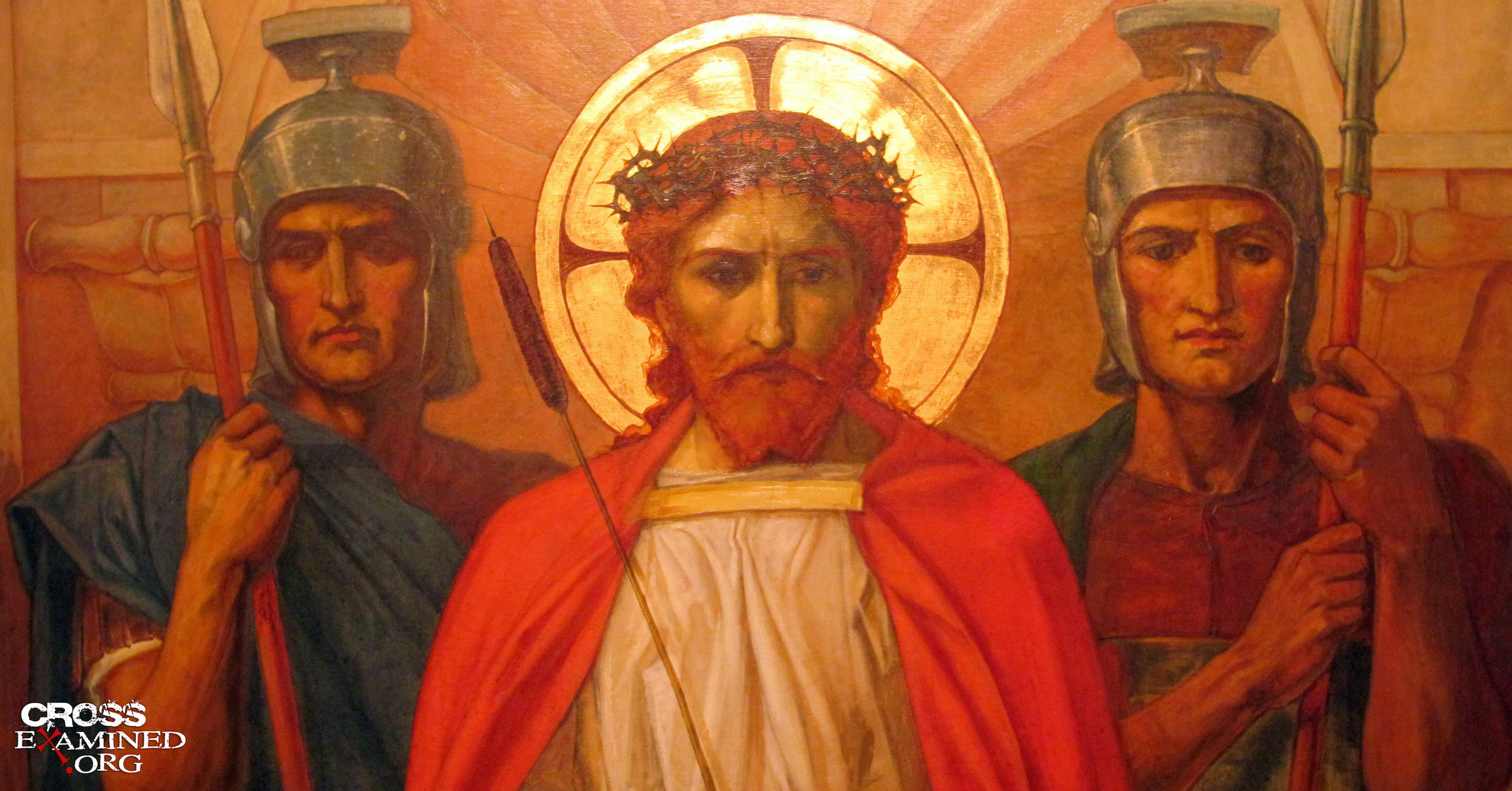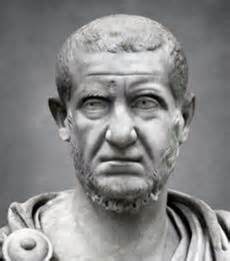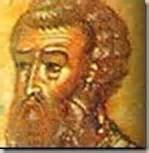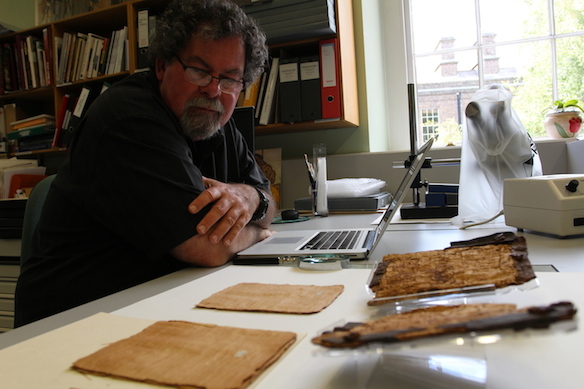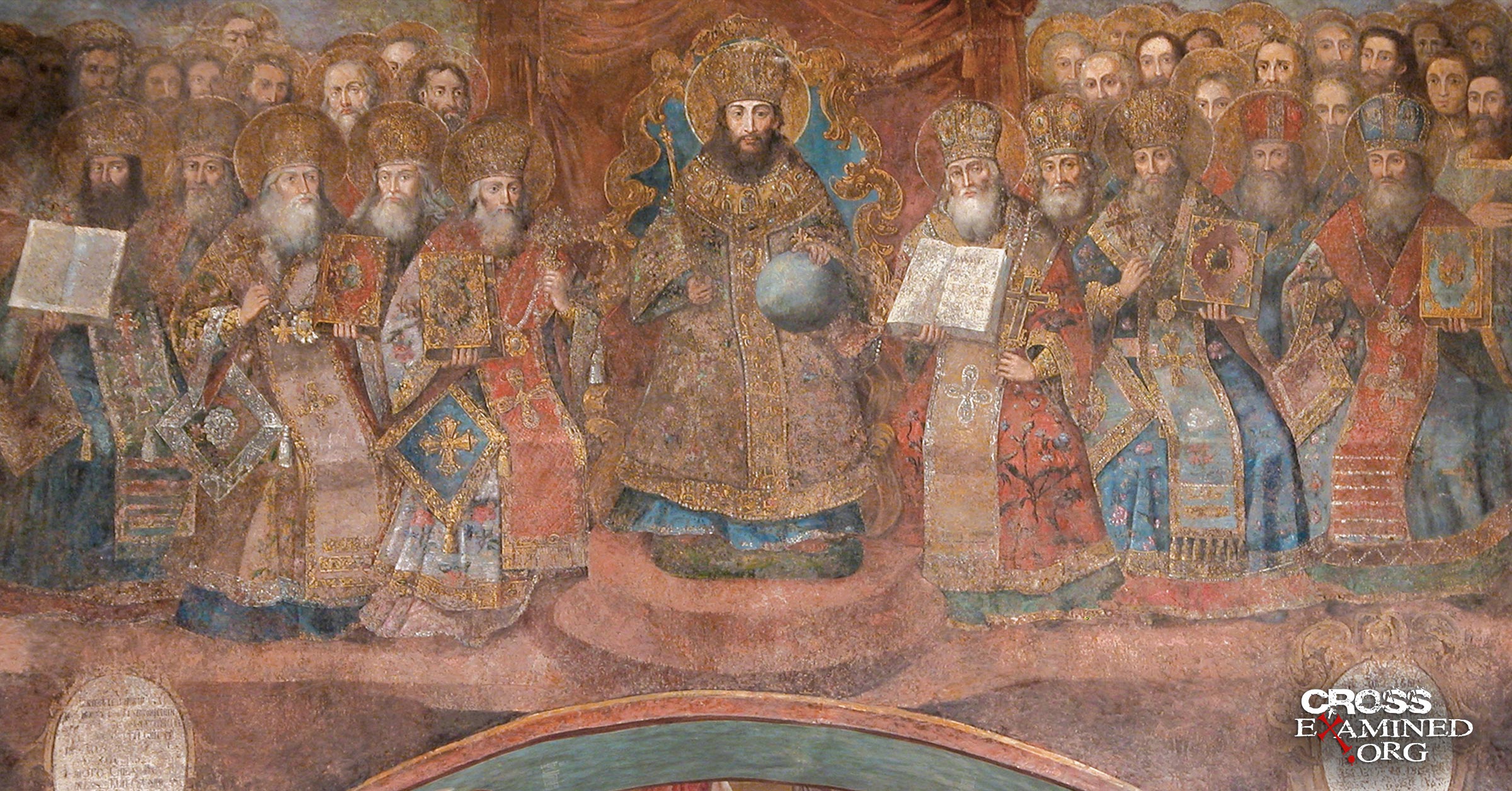Last week, I discussed the second way that historians examine the legitimacy of a historical event by researching enemy attestation. The article demonstrated that Jesus of Nazareth passes such a test. This week, we discuss a third historical method that helps historians determine the historicity of an event… embarrassing admonitions.
Gary Habermas and Michael Licona write that “an indicator that an event or saying is authentic occurs when the source would not be expected to create the story, because it embarrasses his cause and ‘weakened its position in arguments with opponents’[1].”[2] In other words, if a person provides information that would harm his or her cause, then the claims adds to the historical certainty that such an event took place or that such a statement was spoken.
A member at one of my former pastorates gave a great example of this method. He told of a pastor who told his congregation that he was too busy to visit the sick. Then a few sentences later, he had spoken on how he had been playing golf on multiple occasions that week. Such a statement was embarrassing for the pastor and, therefore, increases the reliability that such a statement was given.
When it comes to the early church, seven examples serve as embarrassing admonitions. While others exist, these five relate especially to the core movement of the church.
-
Disciples’ Inability to Understand Message.
If a movement desires to instill the reliability of its advocates, the movement will not present the leaders as ignorant. With the New Testament, the apostles are presented several times as ignorant as to the message presented by Jesus until Jesus explained the message to them at a later point. For instance, Luke records the following,
“And taking the twelve, [Jesus] said to them, ‘See, we are going up to Jerusalem, and everything that is written about the Son of Man by the prophets will be accomplished. For he will be delivered over to the Gentiles and will be mocked and shamefully treated and spit upon. And after flogging him, they will kill him, and on the third day he will rise.’ But they understood none of these things. This saying was hidden from them, and they did not grasp what was said” (Luke 18:31-34).[3]
Some might claim, “Then how can we trust the disciples with the message of Christ if they did not understand?” Well, John explains that Jesus’ “disciples did not understand these things at first, but when Jesus was glorified, then they remembered that these things had been written about him and had been done to him” (John 12:16). That the disciples would include their ignorance verifies the historicity of Jesus’ teachings (at least in part) and their misunderstandings.
-
Jesus’ Ignorance of Certain Events.
It is unheard of that the disciples would elevate Jesus as the Son of God and then document that Jesus did not know a particular thing. Yet, this is what happened with the Evangelists. Jesus is noted as saying, pertaining to the return of Christ at the end of time, that“concerning that day or that hour, no one knows, not even the angels in heaven, nor the Son, but only the Father” (Mark 13:32). Such a statement fits an embarrassing admonition, thus verifying its authenticity.
-
Jesus’ Fear in Facing the Cross.
If someone is building up a fictional hero, the writer is unlikely to include bouts of fear especially if the hero is noted for his/her courage. Yet, on the evening before facing the cross, Jesus “being in an agony he prayed more earnestly; and his sweat became like great drops of blood falling down to the ground” (Luke 22:44). Such a bout of agony could be demonstrated to be an embarrassing admonition, thereby verifying Jesus’ time of prayer in the Garden of Gethsemane.
-
Cowardice of Key Leaders.
Another admonition that would have been embarrassing for the early Christian movement was the claim that the early church leaders, even those of prime importance, fled when Jesus was tried.[4] Consistently, the four canonical Gospels indicate that the male disciples fled while the women remained with Jesus.[5] Women were also listed as prominent disciples in the early church movement (Rom. 16:1-3, 7, 12; Phil. 4:2-3; 1 Cor. 16:19).
In a patriarchal society (where men are elevated and women minimalized), is this something you would want to promote if it were not true??? Would you really want people to know that the women were brave while you were a coward???
-
Joseph of Arimathea’s Burial of Jesus.
Mark, generally held to be the earliest Gospel, notes that one Joseph of Arimathea “a respected member of the council, who was also himself looking for the kingdom of God, took courage and went to Pilate and asked for the body of Jesus…And when he [Pilate] learned from the centurion that he was dead, he granted the corpse to Joseph” (Mark 15:43, 45).
Now, Jesus had been condemned by the Sanhedrin. Joseph of Arimathea was a member of the Sanhedrin. Thus, the burial of Jesus was embarrassing for the church as it would claim that the disciples could not even provide a decent burial. It would take one from the very council that condemned Jesus to give Jesus a proper burial.
-
Testimony of Women.
Habermas notes that “The Gospels are unanimous in their claim that women were the earliest witnesses to the empty sepulcher (Mt 28:1-10; Mk 16:1-8; Lk 24:1-9; Jn 20:1-2). This is a powerful indication of the authenticity of the report, since a woman’s testimony was generally disallowed in a law court, especially on crucial matters.”[6]
We already noted how that first-century Palestine, as well as the rest of the Greco-Roman society, was patriarchal in scope. Lesley DiFrancisco notes that “In the patriarchal societies characteristic of this time, men had social, legal, and economic power. Although women could achieve some status through marriage and motherhood, they were often dependent on men.”[7] Here again, it would not make sense to have the women as the first witnesses of the resurrected Christ unless it actually took place in that fashion.
-
Doubt of Some Pertaining to Jesus’ Resurrection.
Finally, if one were to invent the Christian story, then one would show that everyone saw and believed without reservation. However, the Gospels show that even after Jesus had risen from the dead, some doubted. Matthew writes that “when they saw him they worshiped him, but some doubted” (Matthew 28:17). Luke notes that the women had seen Jesus but the male disciples refused their testimony seeing it as an “idle tale” (Luke 24:10-11). Who could forget of one “Doubting Thomas” who later became “Believing Thomas” (John 20:24-29)? The fact that some disciples doubted the report could be seen as an embarrassing admonition for the early church.
Conclusion
Several other embarrassing admonitions could be added to the seven listed above. However, one should note the great weight of authenticity that comes from these embarrassing admonitions. No one likes to be embarrassed. No one! Thus, we must ask, does Jesus pass the third historical test found in embarrassing admonitions?
YES!!!
So far, Jesus of Nazareth and the early Christian movement have stood strong with the historical methodology employed. But, we are not done yet. Next week, we will examine the fourth aspect of the historical method: early testimony. Just how early are the sources that we possess? Join us next week as we find out.
Bibliography
DiFrancisco, Lesley. “Women in the Bible, Mistreatment of,” The Lexham Bible Dictionary.Edited by John D. Barry, et al. Bellingham, WA: Lexham Press, 2015. Logos Bible Software.
Habermas, Gary R. Habermas, and Michael R. Licona. The Case for the Resurrection of Jesus.Grand Rapids: Kregel, 2004.
Habermas, Gary R. Habermas, The Risen Jesus & Future Hope. Lanham, MD: Rowman & Littlefield, 2003.
Meier, John P. A Marginal Jew: Rethinking the Historical Jesus. Volume 1. New York: Doubleday, 1991-2001. In Gary R. Habermas and Michael R. Licona. The Case for the Resurrection of Jesus.Grand Rapids: Kregel, 2004.
Notes
[1] John P. Meier, A Marginal Jew: Rethinking the Historical Jesus, Volume 1 (New York: Doubleday, 1991-2001), 168 in Gary R. Habermas and Michael R. Licona, The Case for the Resurrection of Jesus (Grand Rapids: Kregel, 2004), 38.
[2] Gary R. Habermas and Michael R. Licona, The Case for the Resurrection of Jesus (Grand Rapids: Kregel, 2004), 38.
[3] Unless otherwise noted, all Scripture comes from the English Standard Version (Wheaton: Crossway, 2001).
[4] E.g. Matthew 26:69-75.
[5] A couple of examples of the women’s faithfulness are seen in Matthew 27:55-56 and John 19:24b-27.
[6] Gary R. Habermas, The Risen Jesus & Future Hope (Lanham, MD: Rowman & Littlefield, 2003), 23.
[7] Lesley DiFransico, “Women in the Bible, Mistreatment of,” The Lexham Bible Dictionary,ed. John D. Barry et al. (Bellingham, WA: Lexham Press, 2015), Logos Bible Software.
Brian G. Chilton is the founder of BellatorChristi.com and is the host of The Bellator Christi Podcast. He received his Master of Divinity in Theology from Liberty University (with high distinction); his Bachelor of Science in Religious Studies and Philosophy from Gardner-Webb University (with honors); and received certification in Christian Apologetics from Biola University. Brian is currently enrolled in the Ph.D. program in Theology and Apologetics at Liberty University. Brian has been in the ministry for over 15 years and serves as a pastor in northwestern North Carolina.
Original Blog Source: http://bit.ly/2tVrUm6

